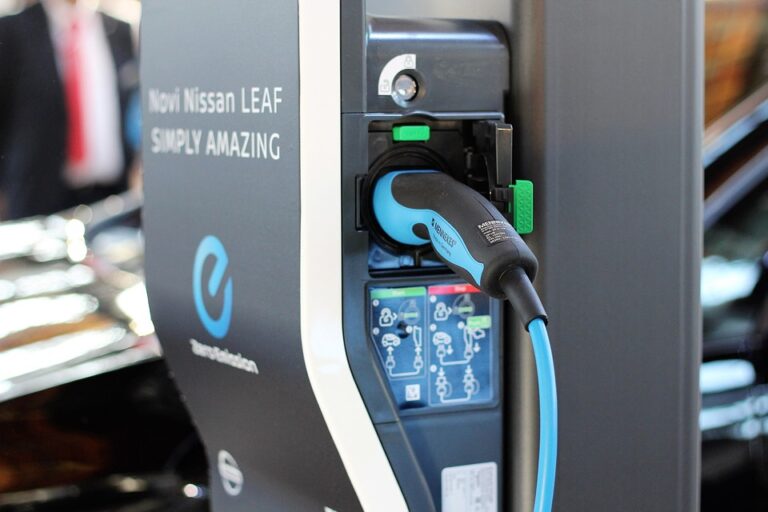Charging Ahead: The Rise of Fast Charging Stations and Their Impact on EV Adoption
The landscape of transportation is rapidly evolving, with Electric Vehicle (EV) adoption surging worldwide. Central to this transformation is the emergence of electric charging stations, especially fast charging stations that are crucial for facilitating the shift toward sustainable mobility. With advancements in charging technology and infrastructure, we are witnessing a pivotal moment in the automotive industry.
The Growing Demand for Electric Charging Stations
As of 2023, there are over 43 million electric vehicles on roads globally, reflecting a growth of more than 60% compared to the previous year. However, a significant hurdle remains: the availability of electric charging stations. According to the International Energy Agency (IEA), to meet rising demand, the number of public charging points needs to increase from 2.1 million in 2021 to 15 million by 2030. This statistic underscores the urgency of expanding our charging network to ensure seamless EV adoption.
Fast charging stations, in particular, play an essential role in this transition, allowing EV owners to recharge their vehicles quickly and conveniently. A fast charger can replenish an EV’s battery to about 80% in just 30 minutes—akin to grabbing a coffee while running errands. This level of convenience is vital for both daily commuters and long-distance travelers.
Advantages of Fast Charging Stations
-
Time Efficiency: Fast charging stations significantly reduce downtime for EV users. For instance, a typical fast charger delivers between 50 kW and 350 kW, allowing drivers to top up their vehicles much faster than conventional chargers.
-
Increased Accessibility: Fast charging infrastructure is increasingly being deployed in strategic locations, such as highway rest stops and urban centers, making it easier for users to charge their vehicles on the go.
- Enhanced Consumer Confidence: With the rapid expansion of electric charging stations, consumers are becoming more confident in the practicality of owning an EV. Reliable access to charging helps alleviate ‘range anxiety’—the fear that an EV will run out of power before reaching the next charging point.
A Case Study: Tesla Supercharger Network
An excellent example of effective fast charging infrastructure is Tesla’s Supercharger network. With over 30,000 Superchargers situated across more than 3,500 locations worldwide, Tesla has set a benchmark for fast charging. Users can experience dramatic time savings with Superchargers that can deliver up to 250 kW, allowing for approximately 1,000 miles of range added in just an hour.
Tesla’s initiative showcases how well-developed fast charging stations can spur EV adoption. In fact, studies show that areas with high-density charging networks experience 20% higher rates of EV sales compared to regions with limited access to charging infrastructure.
Trends Shaping the Future of Electric Charging Stations
The future of electric charging stations appears promising, driven by several key trends:
-
Innovative Technologies: Developments in battery technology and charging standards are continually improving efficiency. Solid-state batteries, for instance, could reduce charging time significantly, enhancing user convenience.
-
Government Initiatives: Many governments are implementing incentives and regulations to encourage the development of charging infrastructure. The United States has allocated $5 billion through the Bipartisan Infrastructure Law to expand its electric charging network.
- Partnerships and Collaborations: Automakers are increasingly partnering with tech companies and utilities to create charging solutions that are smarter, faster, and more user-friendly.
Image Suggestions
-
Image of an EV being charged at a fast charging station
Alt Text: Electric Charging Stations in action: Fast charging an EV.
- Image of a Tesla Supercharger network charging station
Alt Text: Tesla Supercharger Network: A leading example of electric charging stations.
The Road Ahead for EV Adoption
The growth of electric charging stations is deeply intertwined with the future of electric vehicle adoption. With fast charging stations enhancing convenience and reducing charging times, there is little doubt that they will play a vital role in encouraging the transition to electric vehicles.
As it stands, we are at a critical juncture. The continued expansion of charging infrastructure will be essential for hitting ambitious targets for EV adoption. An increase in electric charging stations not only enhances accessibility but also reflects a societal commitment to combating climate change through sustainable transportation practices.
Closing Thoughts
In conclusion, the rise of electric charging stations, particularly fast charging stations, is set to revolutionize the automotive industry. The collaborative efforts among governments, automakers, and technology providers will likely accelerate this shift and foster a greener future. To stay updated on more insights related to the electric vehicle industry, check out these articles on buzzo.live: Understanding the Future of Renewable Energy, The Benefits of Electric Vehicles, and How Governments Can Lead the Charge for EV Adoption.
For further reading, visit the International Energy Agency’s Electric Vehicles Report for an in-depth analysis of electric vehicle trends and infrastructure improvements.
As we continue "charging ahead," the prospect of cleaner and more efficient mobility seems brighter than ever.


